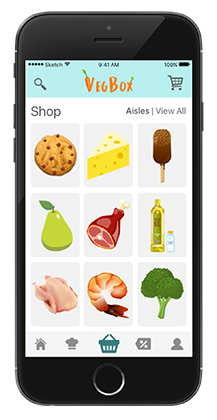VegBox App
The task: Design an app that will allow local vendors and small businesses to sell product to consumers through an app (See the brief)
My role: UX designer following the lean UX process, conducting research, creating wireframes, userflows, and prototypes with the guidance of my Hexagon UX mentor Julie Baes
The Date: September 2017
The process: Worked through the Lean UX process beginning with assumptions about the users, gathering research, sketching, and a number of design iterations and prototypes
The outcome: A mobile app prototype (view here) that encompasses recipes, coupons, and a grocery marketplace where consumers can shop local goods



